1. West Germany
Last weekend, we went to Lübeck. Lübeck was the capital of the Hanseatic empire of the 10th century. It was immediately and overpoweringly charming, what with the sunshine, the amazing architecture, and the shockingly carefree population. It's in the state of Schleswig-Holstein, which means it's in the (cue the drums) former West. This was our first venture into what was West Germany, and while I was expecting a noticeable difference, I wasn't prepared for how poignant the differences would be. Keep in mind that Lübeck is only a few kilometers west of the old border, but what a difference a few kilometers make. There were laughing sunbathers, fresh-smelling lines of laundry fluttering at the river's edge, and a surprising lack of liquor stores. I don't mean to imply that the Eastern side of the nation is dour, foul-smelling and drunken; I only mean to point out the idyllic aspects of the particular town that we visited in the West. It was crooked, but it it was beautiful.
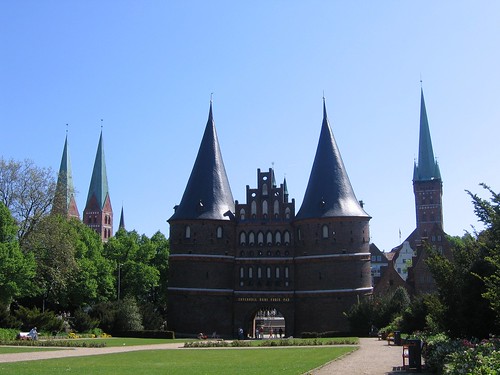
See how this looks a bit crooked? This is the main entrance to the town, built in the 13th century, and it, like many of the town's red-brick buildings, was simply off-kilter. One end seems to dive into the ground, and the spires of the buildings in the background don't seem quite parallel. The whole town was like that. The theory is that the buildings weren't built all at once, but rather floor-by-floor over a number of decades, so they tended to lean one way or the other. However they turned out that way, they were so charming. The town was full of small passages that led to courtyards and gardens, and many of them were just my size.
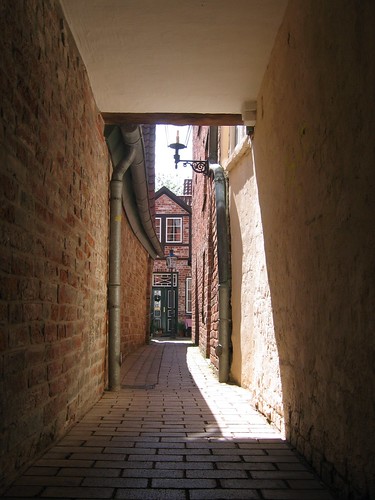
(This passageway also illustrates their somewhat liberal interpretation of straight lines).
The other striking thing about the town was the churches. Granted, I'm no churchgoer, but I was particularly enthralled with the mixture of sacred and irreverent in the churches in this town. They were nearly all Lutheran or Protestant, but they still bore the dramatic marks of Catholic churches, and they wore them well. There was an excess of skulls in their paintings and sculptures, and mixed with the crumble of post-WWII reconstructions, they seemed to have personalities that were distinct, independent of their particular sect or creed. For instance, the Marienkirche in the center of the town.
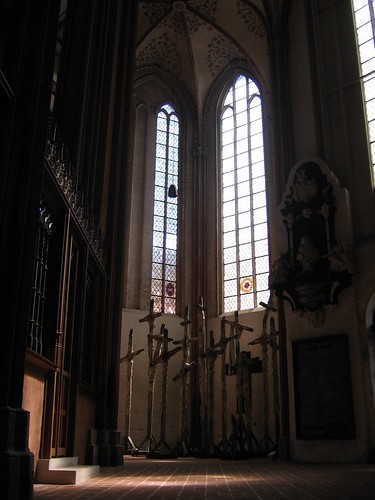
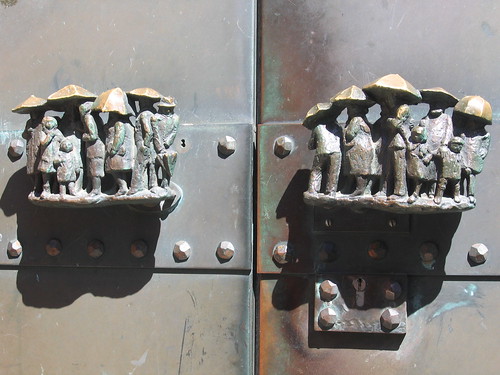
I found it so sweet that these two pieces were part of the same operation. All in all, I found the town to be absolutely delightful. Later that day...
2. East Germany
...we returned to the East. We didn't go straight into the plattenbau of Berlin or the abandonment of Brandenburg an der Havel; instead, we went to Schwerin, the capital of the state of Mecklenburg-Pomerania. It was also generally very charming, albeit in a much more dusty, attic-y way. Many of the buildings were in various states of disrepair, and all but the most main streets seemed a bit abandoned, but there was one spectacular structure there.
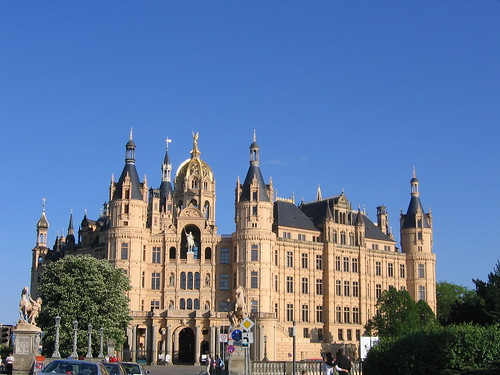
It was so beautiful, and though it was surrounded by mosquitoes and flies, it smelled of lilacs and had its own island. I have to admit, I was keeping an eye out for the more downtrodden views of the East because I was fresh off the buzz of being in the West, but Schloss Schwerin really rubbed my eyes for me, even made me happy. See?
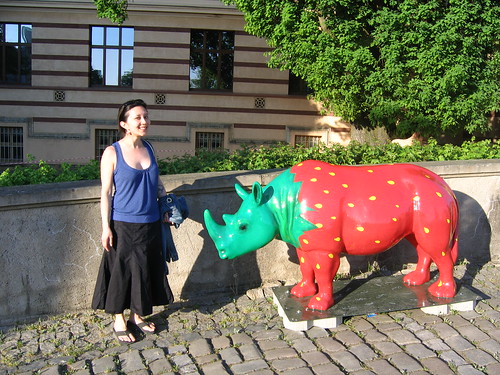
I didn't know what to expect, but I'll advise all who ask: don't shake a stick at Schwerin.
3. Germany 1945
OK, I obviously didn't visit Germany 1945. That's not what this is about. I think I would turn down that offer, as a matter of fact. Instead, I visited an exhibition at the Martin-Gropius-Bau here in Berlin, a collection of photographs by the Soviet photographer Yevgeny Khaldei, and I have to say, it was one of the most amazing photo exhibitions I've ever seen. He was a Red Army photographer, and he was witness to some of the greatest and worst moments ever captured on film. I disappeared while I was looking at those photos. Highly recommended.
We're going to stick with the theme of WWII and visit Schloss Cecilienhof (the birthplace of the divided Germany) in the next week or so. All you war history buffs, it's your lucky day! For everyone else, I'll try to take pretty pictures...
2 comments:
What a wonderful travelogue!... love the photos (thanks for the strawberry rhino). "Beam me up" Katie! more, more...
Yes- the strawberry rhino is absolutely delightful! Or "whimsically irreverent", if i was writing about it for the back of a book :P
Thanks for all the stories and photos, Katie. Nice to live vicariously through you, as always ;)
Post a Comment